 In an era where Mary Cassatt eschewed marriage and a fully adult life to live with her parents in Paris so that she could produce her work, Mary Hiester bounded into an adulthood of painting with a grown-up’s problems of money and sex and logistics . . . Existing with an ambitious man in a socially constricted world for women of which a person today can barely grasp the demeaning dimensions, she lived, by her lights, “cheerfully.” She painted around the obstacles of an artist’s life by employing a woman’s emblem, the rose, and later an emblem of independence, the tree.
In an era where Mary Cassatt eschewed marriage and a fully adult life to live with her parents in Paris so that she could produce her work, Mary Hiester bounded into an adulthood of painting with a grown-up’s problems of money and sex and logistics . . . Existing with an ambitious man in a socially constricted world for women of which a person today can barely grasp the demeaning dimensions, she lived, by her lights, “cheerfully.” She painted around the obstacles of an artist’s life by employing a woman’s emblem, the rose, and later an emblem of independence, the tree.
Molly Peacock’s Flower Diary weaves together three stories—each of which is also, in its own way, more than one kind of story: there’s the biographical account of artist Mary Hiester Reid, including her marriage to and working relationship with her husband George Agnew Reid; there’s the story of Peacock’s second marriage, which is also the story of her second husband’s illness and death; and there’s the story of Mary Evelyn Wrinch, who married George Reid after the first Mary Reid’s death. “The three of them,” Peacock notes, “are even buried together
in Toronto’s Mount Pleasant Cemetery, section 18, lot 22. Not side by side, but on top of each other; MHR is the foundational layer. Then George on top of her. Last, Mary Evelyn on top of George.
 Like Peacock’s earlier, similar work The Paper Garden, the biographical and autobiographical material is interwoven with commentary on art and creativity, especially in this case Mary Hiester Reid’s paintings. For me, these were the best parts of the book. Peacock is a wonderful observer. “A Fireside is rich, warm, and pillowy,” she says of one of Mary’s early paintings:
Like Peacock’s earlier, similar work The Paper Garden, the biographical and autobiographical material is interwoven with commentary on art and creativity, especially in this case Mary Hiester Reid’s paintings. For me, these were the best parts of the book. Peacock is a wonderful observer. “A Fireside is rich, warm, and pillowy,” she says of one of Mary’s early paintings:
It’s full of interest for the beholder’s engagement (books, copper tea kettles, a Japanese print brought back from Paris, George’s copy of a huge Velazquez that Mary admired). To the side of the umber beams bloom paperwhite narcissus bulbs in a ceramic bowl. The sparkler flowers hurl out their scent in swift dashes of white that make you know it must be snowing outside. (Canadians plant them to bloom in January or February, life in the dead of winter.) Painted in 1910 when she was fifty-six, it is of a generous room where MHR lit her own art fire, warmed others, and somehow negotiated the complexities of a spiritual, aesthetic, familiar, and perhaps sexual, quasi-ménage à trois.
“Like the continent’s Depression, or perhaps her own,” she says later, of the still-life “Three Roses,”
Mary’s roses languish, looming from the dark background. One of them even drops two tear-shaped petals onto the table below. Another rose—the youngest?—barely out of the bud, has tightly folded petals. Each one is flushed, the pink of the inside of a mouth. The top flower almost pats the back of the one that has let two weeping petals go. It is a highly emotional scene—roses acting out a romance? The still life has a narrative quality.
Now that she’s described it that way, I can see it: does it make her description any less plausible that it never would have occurred to me to read so much drama into these quietly lovely flowers? I remember having similar questions about her interpretations of some of Mary Delaney’s paper flowers—and about some of the commentary in William Kloss’s ‘Great Course’ on Masterpieces of European Art. “You see, but you do not observe,” Sherlock Holmes famously chides Dr. Watson: it takes a trained eye, a sympathetic eye, perhaps a poetic eye, to see what Peacock sees. Her poet’s words, of course, also make the difference between plain description and illumination.
I found Mary’s paintings really beautiful. (Flower Diary itself is a beautiful object, with heavy, glossy pages and rich, high quality reproductions, a treat for the eyes.) I hadn’t heard of her before. Peacock explains that MHR’s influences were the “tonalists,” painters who “attempt to represent emotions in their paintings through times of day like sunrise, twilight, or sunset, and weather like fog and rain”— a key example is Whistler, whose portrait of Thomas Carlyle was a significant inspiration for MHR’s late composition “A Study in Greys.” MHR, Peacock says, “made [tonalism] her own, with a Realist’s touch”; she had “zero interest in the hard abstraction of modernism.” These labels and abstract explanations mean less to me than Peacock’s insights into the paintings as reminders “that a moment existed, that it flowered fully, that it was fraught and complex, and that a woman in a lace collar holding a palette insisted on its essence.”
 Flower Diary follows Mary’s artistic development, integrating it with the story of her personal life—as indeed the two were intricately related in reality. There are lots of parts to both, including the art school Mary and George ran and many trips to Paris and Spain and time spent in an artistic community in Onteora, in the Catskills. Peacock emphasizes Mary’s “persistence” as an artist. Hers was not a bad marriage, or an unsuccessful career: George was a supportive partner, and she was productive and accomplished and recognized. The times were not kind to ambitious women in general, though, or to women artists more particularly. “I don’t know where the assurance and conviction required for Mary’s sort of persistence comes from precisely,” Peacock comments,
Flower Diary follows Mary’s artistic development, integrating it with the story of her personal life—as indeed the two were intricately related in reality. There are lots of parts to both, including the art school Mary and George ran and many trips to Paris and Spain and time spent in an artistic community in Onteora, in the Catskills. Peacock emphasizes Mary’s “persistence” as an artist. Hers was not a bad marriage, or an unsuccessful career: George was a supportive partner, and she was productive and accomplished and recognized. The times were not kind to ambitious women in general, though, or to women artists more particularly. “I don’t know where the assurance and conviction required for Mary’s sort of persistence comes from precisely,” Peacock comments,
but daily circumstances—the vector of a husband’s energy, an active social life, the maintaining of meals, clothes, sleep, friendship, sex, when no one expects you, a weaker vessel, to do what you do—require an internal stamina that must connect to a conviction that something inside of you will perish if you don’t protect your gift. I marvel at the ability to access emotions so thoroughly and to organize an art life, to display rage and to turn toward a canvas with plans. It is consummately adult to hold at once these contradictory responses and urges. “Going cheerfully on with the task” was her method. Eight paintings equaled health, equaled survival, equaled a truly textured life that could have disintegrated if the rage and disappointment she modeled had been enacted.
 “Going cheerfully on with the task”: there’s no doubt that this is admirable, and getting on with things rather than enacting one’s rage may indeed by a truly adult—the only possible—adult response to the complexities of life, including married life. There’s ultimately something a bit stolid about the woman we meet in Flower Diary, though, or about Peacock’s characterization of her anyway, and I think that’s why Flower Diary, interesting as it is, and full as it is of beautiful pictures and wonderful bits of writing, was a disappointment to me after the revelation that was The Paper Garden. The story of Mary Delany discovering and fulfilling her own peculiar creative genius late in life was so exhilarating; it seemed to offer so much hope. It is, as I said in my post about it “a subversive, celebratory view of growing older as a woman”: in Peacock’s wonderful phrasing, “Her whole life flowed to the place where she plucked that moment.”
“Going cheerfully on with the task”: there’s no doubt that this is admirable, and getting on with things rather than enacting one’s rage may indeed by a truly adult—the only possible—adult response to the complexities of life, including married life. There’s ultimately something a bit stolid about the woman we meet in Flower Diary, though, or about Peacock’s characterization of her anyway, and I think that’s why Flower Diary, interesting as it is, and full as it is of beautiful pictures and wonderful bits of writing, was a disappointment to me after the revelation that was The Paper Garden. The story of Mary Delany discovering and fulfilling her own peculiar creative genius late in life was so exhilarating; it seemed to offer so much hope. It is, as I said in my post about it “a subversive, celebratory view of growing older as a woman”: in Peacock’s wonderful phrasing, “Her whole life flowed to the place where she plucked that moment.”
When I wrote about The Paper Garden, it resonated with my rising hope that I too might be finding my moment. Now, almost a decade later, I feel less buoyant, more tired and uncertain. It’s not that I don’t recognize myself in MHR: it’s that I do (except maybe the ability to carry on the endless negotiations between life and work, reality and ambition, as “cheerfully” as she apparently could). Where Mary Delany offered inspiration, Mary Hiester Reid represents something more like sensible resignation: do what you can, keep on doing it as well as you can, be satisfied if the work is good. That’s exactly right, of course, and MHR’s work, as Peacock shows it to me, is good indeed. And yet at the same time it seems uncomfortably apt that the culmination of such a life is a study in greys and not an exuberant flowering.





 In an era where Mary Cassatt eschewed marriage and a fully adult life to live with her parents in Paris so that she could produce her work, Mary Hiester bounded into an adulthood of painting with a grown-up’s problems of money and sex and logistics . . . Existing with an ambitious man in a socially constricted world for women of which a person today can barely grasp the demeaning dimensions, she lived, by her lights, “cheerfully.” She painted around the obstacles of an artist’s life by employing a woman’s emblem, the rose, and later an emblem of independence, the tree.
In an era where Mary Cassatt eschewed marriage and a fully adult life to live with her parents in Paris so that she could produce her work, Mary Hiester bounded into an adulthood of painting with a grown-up’s problems of money and sex and logistics . . . Existing with an ambitious man in a socially constricted world for women of which a person today can barely grasp the demeaning dimensions, she lived, by her lights, “cheerfully.” She painted around the obstacles of an artist’s life by employing a woman’s emblem, the rose, and later an emblem of independence, the tree. Like Peacock’s earlier, similar work
Like Peacock’s earlier, similar work 
 Flower Diary follows Mary’s artistic development, integrating it with the story of her personal life—as indeed the two were intricately related in reality. There are lots of parts to both, including the art school Mary and George ran and many trips to Paris and Spain and time spent in an artistic community in Onteora, in the Catskills. Peacock emphasizes Mary’s “persistence” as an artist. Hers was not a bad marriage, or an unsuccessful career: George was a supportive partner, and she was productive and accomplished and recognized. The times were not kind to ambitious women in general, though, or to women artists more particularly. “I don’t know where the assurance and conviction required for Mary’s sort of persistence comes from precisely,” Peacock comments,
Flower Diary follows Mary’s artistic development, integrating it with the story of her personal life—as indeed the two were intricately related in reality. There are lots of parts to both, including the art school Mary and George ran and many trips to Paris and Spain and time spent in an artistic community in Onteora, in the Catskills. Peacock emphasizes Mary’s “persistence” as an artist. Hers was not a bad marriage, or an unsuccessful career: George was a supportive partner, and she was productive and accomplished and recognized. The times were not kind to ambitious women in general, though, or to women artists more particularly. “I don’t know where the assurance and conviction required for Mary’s sort of persistence comes from precisely,” Peacock comments, “Going cheerfully on with the task”: there’s no doubt that this is admirable, and getting on with things rather than enacting one’s rage may indeed by a truly adult—the only possible—adult response to the complexities of life, including married life. There’s ultimately something a bit stolid about the woman we meet in Flower Diary, though, or about Peacock’s characterization of her anyway, and I think that’s why Flower Diary, interesting as it is, and full as it is of beautiful pictures and wonderful bits of writing, was a disappointment to me after the revelation that was The Paper Garden. The story of Mary Delany discovering and fulfilling her own peculiar creative genius late in life was so exhilarating; it seemed to offer so much hope. It is, as I said in my post about it “a subversive, celebratory view of growing older as a woman”: in Peacock’s wonderful phrasing, “Her whole life flowed to the place where she plucked that moment.”
“Going cheerfully on with the task”: there’s no doubt that this is admirable, and getting on with things rather than enacting one’s rage may indeed by a truly adult—the only possible—adult response to the complexities of life, including married life. There’s ultimately something a bit stolid about the woman we meet in Flower Diary, though, or about Peacock’s characterization of her anyway, and I think that’s why Flower Diary, interesting as it is, and full as it is of beautiful pictures and wonderful bits of writing, was a disappointment to me after the revelation that was The Paper Garden. The story of Mary Delany discovering and fulfilling her own peculiar creative genius late in life was so exhilarating; it seemed to offer so much hope. It is, as I said in my post about it “a subversive, celebratory view of growing older as a woman”: in Peacock’s wonderful phrasing, “Her whole life flowed to the place where she plucked that moment.”

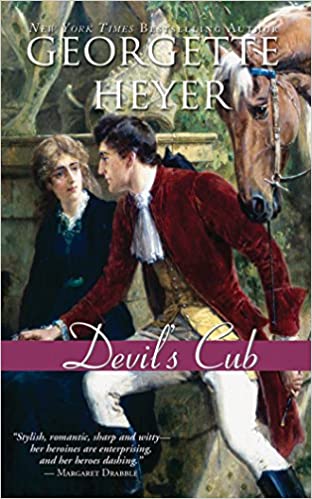 Once several years ago I was waiting for my daughter to come out of a medical appointment. The waiting area was, as is typical, neither particularly comfortable nor particularly cheering, and yet when she came out she stopped and exclaimed “you look so happy!” And I was! Why? Because I had just been reading the part of Georgette Heyer’s Devil’s Cub in which (if you know the novel, you can probably already guess) our heroine Mary accidentally tells the forbidding Duke of Avon all about the troubles she has been having with his renegade son, the Marquis of Vidal, with whom she has, against all propriety and practicality, fallen completely in love. I say “accidentally” because she doesn’t know that the enigmatic man she’s talking to is Vidal’s father–but we do, or at least we suspect it much sooner than she discovers it, and so the whole conversation is just delicious, for reasons you have to read the rest of the novel to fully appreciate.
Once several years ago I was waiting for my daughter to come out of a medical appointment. The waiting area was, as is typical, neither particularly comfortable nor particularly cheering, and yet when she came out she stopped and exclaimed “you look so happy!” And I was! Why? Because I had just been reading the part of Georgette Heyer’s Devil’s Cub in which (if you know the novel, you can probably already guess) our heroine Mary accidentally tells the forbidding Duke of Avon all about the troubles she has been having with his renegade son, the Marquis of Vidal, with whom she has, against all propriety and practicality, fallen completely in love. I say “accidentally” because she doesn’t know that the enigmatic man she’s talking to is Vidal’s father–but we do, or at least we suspect it much sooner than she discovers it, and so the whole conversation is just delicious, for reasons you have to read the rest of the novel to fully appreciate. Last week, because the new books I had been reading weren’t thrilling me, I decided to reread an old favorite, Dorothy Dunnett’s The Ringed Castle. I know this novel so well now that sometimes I skim a bit to get to the parts I particularly love. I read quite a bit of it ‘properly’ this time, because it’s just so good, and it helped reconnect me with my inner bookworm. Near the end, there’s a scene in The Ringed Castle that makes me just as happy as that bit of Devil’s Cub (again, readers of the novel can probably guess which one – in fact, when I mentioned this on Twitter
Last week, because the new books I had been reading weren’t thrilling me, I decided to reread an old favorite, Dorothy Dunnett’s The Ringed Castle. I know this novel so well now that sometimes I skim a bit to get to the parts I particularly love. I read quite a bit of it ‘properly’ this time, because it’s just so good, and it helped reconnect me with my inner bookworm. Near the end, there’s a scene in The Ringed Castle that makes me just as happy as that bit of Devil’s Cub (again, readers of the novel can probably guess which one – in fact, when I mentioned this on Twitter 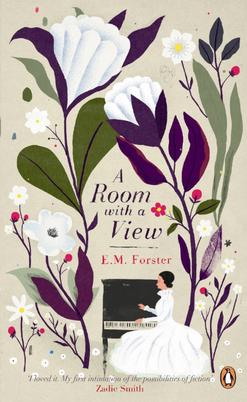 “You look so happy”: that’s not the only thing reading can do, and it isn’t always what we want from our reading, but it’s a special gift when it happens, isn’t it, especially these days? I can think of only a few other scenes that have this particular effect on me: the bathing scene in A Room with a View, the evidence-collecting walk on the beach in Have His Carcase, the rooftop chase in Checkmate (so, score two for Dunnett), the ending of Pride and Prejudice, several small pieces of Cranford (the cow in flannel pyjamas!). Of course there are many, many other reading moments that I love and enjoy and return to over and over, for all sorts of reasons, but these are the some of the ones that make me feel as if I’ve turned my face to the sun: warmed, uplifted, delighted. The joy they give me depends not just on the words on the page but on my history with those pages, and also, as with all idiosyncratic responses, on my own history more generally, and on that elusive thing we could call my “sensibility” as a reader. In that moment everything, not just reading, feels as good as it gets. What a comfort it always is to know that I can return to that happy place any time, just by picking the book up again.
“You look so happy”: that’s not the only thing reading can do, and it isn’t always what we want from our reading, but it’s a special gift when it happens, isn’t it, especially these days? I can think of only a few other scenes that have this particular effect on me: the bathing scene in A Room with a View, the evidence-collecting walk on the beach in Have His Carcase, the rooftop chase in Checkmate (so, score two for Dunnett), the ending of Pride and Prejudice, several small pieces of Cranford (the cow in flannel pyjamas!). Of course there are many, many other reading moments that I love and enjoy and return to over and over, for all sorts of reasons, but these are the some of the ones that make me feel as if I’ve turned my face to the sun: warmed, uplifted, delighted. The joy they give me depends not just on the words on the page but on my history with those pages, and also, as with all idiosyncratic responses, on my own history more generally, and on that elusive thing we could call my “sensibility” as a reader. In that moment everything, not just reading, feels as good as it gets. What a comfort it always is to know that I can return to that happy place any time, just by picking the book up again. 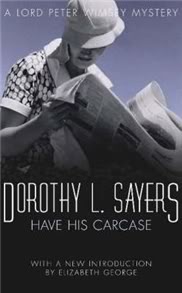
 I can’t post about books I’ve finished this week because I haven’t finished any. I’ve been trying to read–keeping in mind
I can’t post about books I’ve finished this week because I haven’t finished any. I’ve been trying to read–keeping in mind  So, one challenge is aging, and there’s not much to be done about that (and it’s only going to get worse, I know!) The other, though, has been the books I’ve been trying to focus on. Both are ones I have wanted to read for a long time, but neither has proved the right book for this moment, although one of them I am still working on. The first one I started this week was Elizabeth Bowen’s The Death of the Heart, which has been on my reading wish list for years. It looks great! I am sure it is great! But a couple of chapters into it, I just couldn’t bear it: it was making me feel both bored and claustrophobic. I suspect some of that is a deliberate effect, as it seems to be about a stifling world that tries to stifle people’s feelings. Bowen’s sentences didn’t help. I love Olivia Manning’s description of Bowen’s prose as being like someone drinking milk with their legs crossed behind their head: often, it just seems to be making something that’s actually fairly simple much more complicated than it needs to be!
So, one challenge is aging, and there’s not much to be done about that (and it’s only going to get worse, I know!) The other, though, has been the books I’ve been trying to focus on. Both are ones I have wanted to read for a long time, but neither has proved the right book for this moment, although one of them I am still working on. The first one I started this week was Elizabeth Bowen’s The Death of the Heart, which has been on my reading wish list for years. It looks great! I am sure it is great! But a couple of chapters into it, I just couldn’t bear it: it was making me feel both bored and claustrophobic. I suspect some of that is a deliberate effect, as it seems to be about a stifling world that tries to stifle people’s feelings. Bowen’s sentences didn’t help. I love Olivia Manning’s description of Bowen’s prose as being like someone drinking milk with their legs crossed behind their head: often, it just seems to be making something that’s actually fairly simple much more complicated than it needs to be!  The other is John Le Carré’s A Perfect Spy, which I am still working on. I loved
The other is John Le Carré’s A Perfect Spy, which I am still working on. I loved  So that’s where I am this week! I have been thinking a lot about posting more in my once-usual “this week in my classes” series but I can’t seem to get past the twin obstacles of my classes
So that’s where I am this week! I have been thinking a lot about posting more in my once-usual “this week in my classes” series but I can’t seem to get past the twin obstacles of my classes 







 From Patrick Leigh Fermor’s A Time of Gifts:
From Patrick Leigh Fermor’s A Time of Gifts: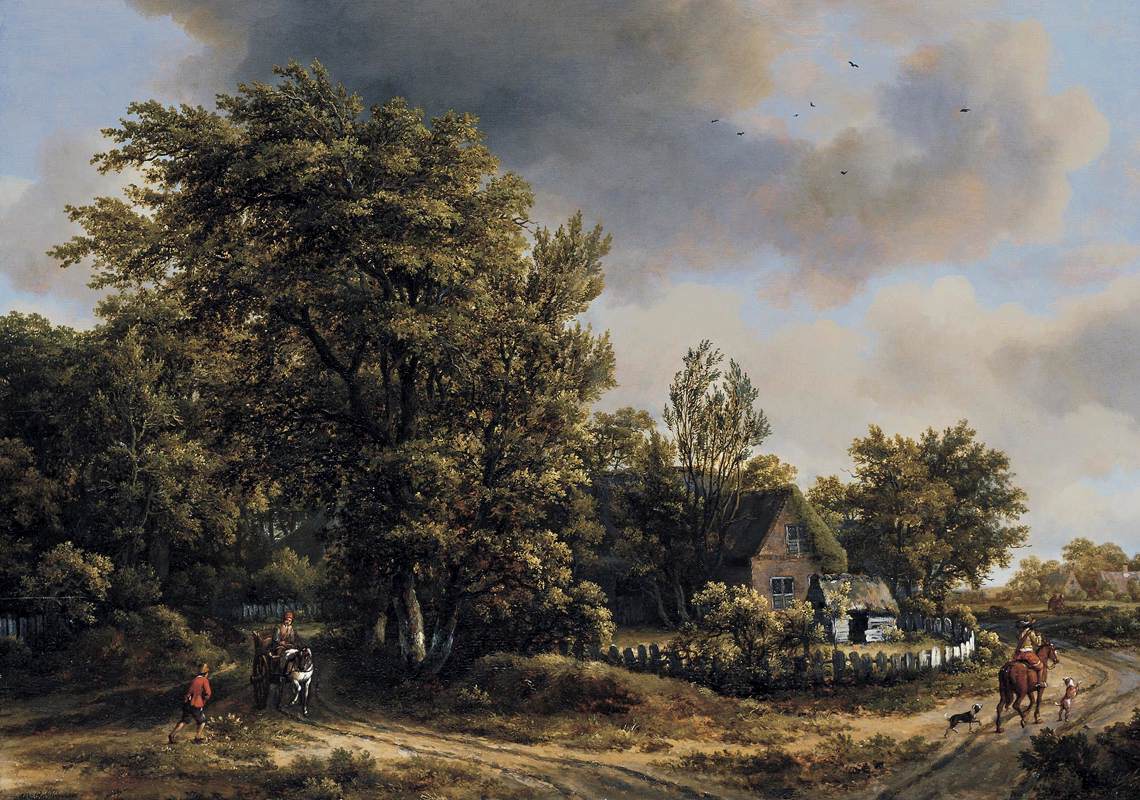

 I’m having a hard time keeping track of what day it is, mostly because under the new work-from-home protocol–and the more general stay-at-home order–there’s not much difference between one day and the next. I’ve also stopped doing grocery shopping on Saturday mornings (which had been my routine for more than two decades): now I go mid-week, usually Wednesday, as early as I’m allowed in the store, which means I’m home by 9 a.m. and so, aside from the gradually receding adrenaline from the stress of the outing, it too then becomes a day like every other day.
I’m having a hard time keeping track of what day it is, mostly because under the new work-from-home protocol–and the more general stay-at-home order–there’s not much difference between one day and the next. I’ve also stopped doing grocery shopping on Saturday mornings (which had been my routine for more than two decades): now I go mid-week, usually Wednesday, as early as I’m allowed in the store, which means I’m home by 9 a.m. and so, aside from the gradually receding adrenaline from the stress of the outing, it too then becomes a day like every other day. Afternoons are (more or less) for reading. I haven’t posted about any books since The Glass Hotel but that isn’t because I haven’t read any. In fact, I have read four (almost five) books since then, all by P. D. James, because I am rereading her complete works (or all of her mysteries, at any rate) in preparation for writing a piece for the TLS in honor of her centenary. I was really glad that the editors liked this idea: it’s a perfect project for this haphazard summer. I have a lot of ideas about James from having read (and taught) her for years, but I have not had a reason to put those ideas in good order before, and it has also been a long time since I read most of her back catalog. It’s very interesting reading through the books all at once and in order: you quickly notice recurring themes and habits, strengths and weaknesses, and also the way her scope and themes expand. I think (I hope!) that this is a kind of essay I’m reasonably good at, collating and synthesizing across a range of examples; this is also an approach that I think works well for crime series, which are interesting both in their individual parts and as enduring creations that are more than the sum of those parts, often (as in this case) through the story they tell about the central detective that unifies them. My previous essays on
Afternoons are (more or less) for reading. I haven’t posted about any books since The Glass Hotel but that isn’t because I haven’t read any. In fact, I have read four (almost five) books since then, all by P. D. James, because I am rereading her complete works (or all of her mysteries, at any rate) in preparation for writing a piece for the TLS in honor of her centenary. I was really glad that the editors liked this idea: it’s a perfect project for this haphazard summer. I have a lot of ideas about James from having read (and taught) her for years, but I have not had a reason to put those ideas in good order before, and it has also been a long time since I read most of her back catalog. It’s very interesting reading through the books all at once and in order: you quickly notice recurring themes and habits, strengths and weaknesses, and also the way her scope and themes expand. I think (I hope!) that this is a kind of essay I’m reasonably good at, collating and synthesizing across a range of examples; this is also an approach that I think works well for crime series, which are interesting both in their individual parts and as enduring creations that are more than the sum of those parts, often (as in this case) through the story they tell about the central detective that unifies them. My previous essays on 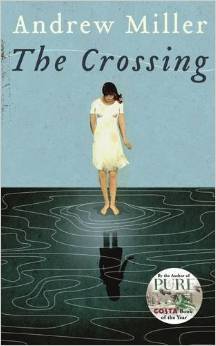 I do have some other books on the go or in the queue. I am about 100 pages into Andrew Miller’s The Crossing, which is the last of the random pile of library books I brought home shortly before the lockdown. It’s good so far in the way his other books were good: meticulous, quietly and a bit ominously atmospheric. I ordered Isabella Hammad’s The Parisian from Bookmark, and it looks very tempting; I pulled Patrick Leigh Fermor’s A Time of Gifts from the shelf because I’ve never read it and if there was ever a time to travel vicariously in excellent literary company, this is surely it. My book club “met” on Thursday to discuss
I do have some other books on the go or in the queue. I am about 100 pages into Andrew Miller’s The Crossing, which is the last of the random pile of library books I brought home shortly before the lockdown. It’s good so far in the way his other books were good: meticulous, quietly and a bit ominously atmospheric. I ordered Isabella Hammad’s The Parisian from Bookmark, and it looks very tempting; I pulled Patrick Leigh Fermor’s A Time of Gifts from the shelf because I’ve never read it and if there was ever a time to travel vicariously in excellent literary company, this is surely it. My book club “met” on Thursday to discuss 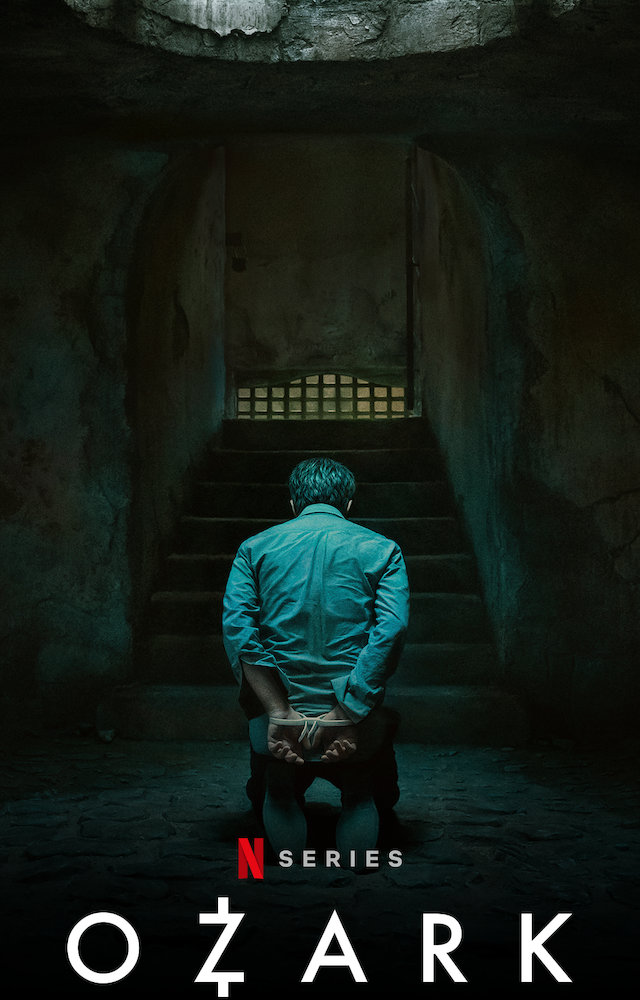 We have certainly been watching a lot of TV: the new season of Better Call Saul, The End of the F***ing World, Little Fires Everywhere, The Stranger, Ozark … If we’d known what lay ahead, we might have rationed some of the other shows we watched over the winter–season 5 of Line of Duty, the latest season of Shetland–that we knew to be engrossing. It is a good time to be watching Parks and Recreation for the first time: its gentle, goodhearted humor is a tonic. Sadly, the channel that carried the Great British Sewing Bee and various other painting and craft shows has dropped suddenly from our cable package, just when such low-key distractions would be more welcome than ever, and a lot of the videos on the Youtube channel where I had found the Great Pottery Throwdown are now blocked, which I guess is legitimate but it’s still sad. It was March 8 that I wrote about how
We have certainly been watching a lot of TV: the new season of Better Call Saul, The End of the F***ing World, Little Fires Everywhere, The Stranger, Ozark … If we’d known what lay ahead, we might have rationed some of the other shows we watched over the winter–season 5 of Line of Duty, the latest season of Shetland–that we knew to be engrossing. It is a good time to be watching Parks and Recreation for the first time: its gentle, goodhearted humor is a tonic. Sadly, the channel that carried the Great British Sewing Bee and various other painting and craft shows has dropped suddenly from our cable package, just when such low-key distractions would be more welcome than ever, and a lot of the videos on the Youtube channel where I had found the Great Pottery Throwdown are now blocked, which I guess is legitimate but it’s still sad. It was March 8 that I wrote about how  I’m not sure whether I’m surprised that it has already been three weeks since we began extreme social distancing here or surprised that it hasn’t been even longer — normalcy itself seems so distant now! It seems remote in both directions, too: hard as it is to think back on the relative simplicity of ordinary life before, it is even harder to look ahead because there is so much uncertainty about when and how those conditions will return. That’s as good an argument as any for trying to take this massive disruption one day at a time, which is certainly what I have been trying to do. My success varies, as does my ability to get through each day with anything like the (again, relative) equanimity and focus I used to have.
I’m not sure whether I’m surprised that it has already been three weeks since we began extreme social distancing here or surprised that it hasn’t been even longer — normalcy itself seems so distant now! It seems remote in both directions, too: hard as it is to think back on the relative simplicity of ordinary life before, it is even harder to look ahead because there is so much uncertainty about when and how those conditions will return. That’s as good an argument as any for trying to take this massive disruption one day at a time, which is certainly what I have been trying to do. My success varies, as does my ability to get through each day with anything like the (again, relative) equanimity and focus I used to have.
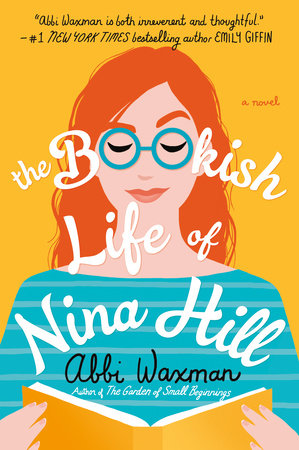
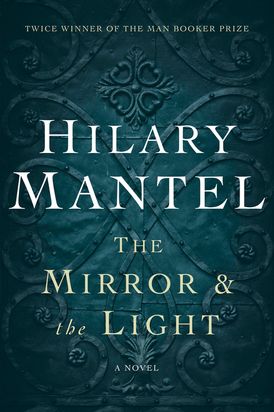
 Like everyone else in the world (and how odd for that not to be hyperbole, though our timelines have differed) I have spent the past week adjusting to the unprecedented risks and disruptions created by the spread of COVID-19. Friday March 13 began as a more or less ordinary day of classes: the cloud was looming on the horizon, reports were coming in of the first university closures in Canada, and we had been instructed to start making contingency plans in case Dalhousie followed suit. But my schedule that day was normal almost to the end: I had a meeting with our Associate Dean Academic to discuss my interest in trying contract grading in my first-year writing class; I taught the second of four planned classes on Three Guineas in the Brit Lit survey class and of four planned classes on Mary Barton in 19th-Century British Fiction. The only real break from routine was a brisk walk down to Spring Garden Road at lunch time to pick up a couple of items I thought it might be nice to have secured, just in case: Helene Tursten’s An Elderly Lady Is Up to No Good for my book club, which I knew had just come in at Bookmark, and a bottle of my favorite Body Shop shower gel (
Like everyone else in the world (and how odd for that not to be hyperbole, though our timelines have differed) I have spent the past week adjusting to the unprecedented risks and disruptions created by the spread of COVID-19. Friday March 13 began as a more or less ordinary day of classes: the cloud was looming on the horizon, reports were coming in of the first university closures in Canada, and we had been instructed to start making contingency plans in case Dalhousie followed suit. But my schedule that day was normal almost to the end: I had a meeting with our Associate Dean Academic to discuss my interest in trying contract grading in my first-year writing class; I taught the second of four planned classes on Three Guineas in the Brit Lit survey class and of four planned classes on Mary Barton in 19th-Century British Fiction. The only real break from routine was a brisk walk down to Spring Garden Road at lunch time to pick up a couple of items I thought it might be nice to have secured, just in case: Helene Tursten’s An Elderly Lady Is Up to No Good for my book club, which I knew had just come in at Bookmark, and a bottle of my favorite Body Shop shower gel (
 So I packed up and went home–but still, I realized later, without having quite focused on what was happening. For example, I brought home not just the books we were in the middle of but the books that are (were) next on the class schedule, because it still seemed plausible that we would be doing something like actually finishing the courses as originally planned. And I did not bring home a stack of books that it might just be nice to have copies of at home–any of my Victorian novels, for instance. I own around a dozen copies of Middlemarch, and right now every one of them is out of reach! We are still allowed into our building, and I’ve been thinking I should go get one, and maybe some Trollope. I can’t tell if this really makes much sense, though. I mean, it’s not like I don’t have a lot of books to read right here with me, and I also have e-books of a lot of 19th-century novels because when I bought my first Sony e-reader, years ago, part of the deal was a big stack of free classics to go with it. So what if I don’t like reading long books electronically: I could get used to it. It would be a pretty low-risk outing, given that the campus is basically a ghost town at this point, but I think it’s really psychological reassurance I would be seeking, not reading material, and what are the odds that seeing familiar places I can’t really go back to for who knows how long would actually be comforting?
So I packed up and went home–but still, I realized later, without having quite focused on what was happening. For example, I brought home not just the books we were in the middle of but the books that are (were) next on the class schedule, because it still seemed plausible that we would be doing something like actually finishing the courses as originally planned. And I did not bring home a stack of books that it might just be nice to have copies of at home–any of my Victorian novels, for instance. I own around a dozen copies of Middlemarch, and right now every one of them is out of reach! We are still allowed into our building, and I’ve been thinking I should go get one, and maybe some Trollope. I can’t tell if this really makes much sense, though. I mean, it’s not like I don’t have a lot of books to read right here with me, and I also have e-books of a lot of 19th-century novels because when I bought my first Sony e-reader, years ago, part of the deal was a big stack of free classics to go with it. So what if I don’t like reading long books electronically: I could get used to it. It would be a pretty low-risk outing, given that the campus is basically a ghost town at this point, but I think it’s really psychological reassurance I would be seeking, not reading material, and what are the odds that seeing familiar places I can’t really go back to for who knows how long would actually be comforting? Anyway, it quickly became clear that the right strategy (and, to their credit, the one our administrators have been urging) is not to try to replicate electronically all of our plans for the last few weeks of term, including the final exam period, but to smooth students’ paths to completion as best we can: dropping readings and assignments and giving them options including taking the grade they have earned so far but still also allowing another chance to do better in as painless a way as we can think of. I think the options I came up with for my classes are pretty good, in these respects, but it may be that they don’t go far enough, because this is all turning out to be so much harder than it sounded a week ago–and of course however we might (or might not!) be managing, our students have their own specific circumstances which may make even the most “reasonable” alternatives too much. I have been feeling a lot of regret about the books we won’t get to, especially The Remains of the Day, which I was increasingly excited about as the capstone text for the survey class–what a good book to read right after Three Guineas! As for Three Guineas itself, I was so excited about teaching it for the first time. It’s definitely going back on my syllabus the next time it fits the brief. Sigh.
Anyway, it quickly became clear that the right strategy (and, to their credit, the one our administrators have been urging) is not to try to replicate electronically all of our plans for the last few weeks of term, including the final exam period, but to smooth students’ paths to completion as best we can: dropping readings and assignments and giving them options including taking the grade they have earned so far but still also allowing another chance to do better in as painless a way as we can think of. I think the options I came up with for my classes are pretty good, in these respects, but it may be that they don’t go far enough, because this is all turning out to be so much harder than it sounded a week ago–and of course however we might (or might not!) be managing, our students have their own specific circumstances which may make even the most “reasonable” alternatives too much. I have been feeling a lot of regret about the books we won’t get to, especially The Remains of the Day, which I was increasingly excited about as the capstone text for the survey class–what a good book to read right after Three Guineas! As for Three Guineas itself, I was so excited about teaching it for the first time. It’s definitely going back on my syllabus the next time it fits the brief. Sigh. One of the most emotionally painful parts of all of this has been the abrupt severance of personal relationships, which is what teaching is really all about. I have put course materials together to get us to the end of our current texts, but it is much less rewarding scripting them than it is taking my ideas and questions in to meet them with and seeing what comes of our encounter. Sure, it doesn’t always go swimmingly, but that just means you try again, or try something different. I know there are ways to include more personal and “synchronous” interaction (as we’ve quickly learned to label it!) in online teaching, and of course as someone who spends a lot of time online I already believe that you can cultivate meaningful relationships without meeting face to face. There just isn’t time for that now, though, and also the demands those tools put on everyone to be available and attentive at the same time are all wrong for our immediate circumstances. It isn’t just about finding ways to get through the course material together either: there are students I have been working with for years who it turns out I saw in person for maybe the last time that Friday without even knowing it. I have been thinking about them, and about all of my students, so much since that hectic departure from campus and hoping they know how much I have valued our time together and how much I already miss them!
One of the most emotionally painful parts of all of this has been the abrupt severance of personal relationships, which is what teaching is really all about. I have put course materials together to get us to the end of our current texts, but it is much less rewarding scripting them than it is taking my ideas and questions in to meet them with and seeing what comes of our encounter. Sure, it doesn’t always go swimmingly, but that just means you try again, or try something different. I know there are ways to include more personal and “synchronous” interaction (as we’ve quickly learned to label it!) in online teaching, and of course as someone who spends a lot of time online I already believe that you can cultivate meaningful relationships without meeting face to face. There just isn’t time for that now, though, and also the demands those tools put on everyone to be available and attentive at the same time are all wrong for our immediate circumstances. It isn’t just about finding ways to get through the course material together either: there are students I have been working with for years who it turns out I saw in person for maybe the last time that Friday without even knowing it. I have been thinking about them, and about all of my students, so much since that hectic departure from campus and hoping they know how much I have valued our time together and how much I already miss them! And now, I guess, it’s time to settle in to what people keep euphemistically calling “the new normal.” Here in Halifax we are under strong directions for social distancing; I’ve heard rumors that something more rigorous might be coming, in the hope of really flattening that infamous curve. There are lots of wry jokes and memes about readers or introverts or others whose habits and preferences mean they have been “preparing for this moment our whole lives.” We live a pretty quiet life ourselves, so to some extent this is true of us as well (though not of Maddie, who like many young people is going to be very well served by the various ways she and her friends can stay in touch virtually). It’s pretty different having to stay home, though, and also worrying whenever you go out, even if it’s only for essentials. It’s also not spring yet here–I envy my family in Vancouver the softening weather that makes walks and parks and gardens good options. I am grateful, though, that we are comfortable and together and, so far, healthy. I am also glad I did pick up An Elderly Lady Is Up to No Good, because I finished reading it this morning and it is a nice bit of twisted fun…about which more soon, I hope!
And now, I guess, it’s time to settle in to what people keep euphemistically calling “the new normal.” Here in Halifax we are under strong directions for social distancing; I’ve heard rumors that something more rigorous might be coming, in the hope of really flattening that infamous curve. There are lots of wry jokes and memes about readers or introverts or others whose habits and preferences mean they have been “preparing for this moment our whole lives.” We live a pretty quiet life ourselves, so to some extent this is true of us as well (though not of Maddie, who like many young people is going to be very well served by the various ways she and her friends can stay in touch virtually). It’s pretty different having to stay home, though, and also worrying whenever you go out, even if it’s only for essentials. It’s also not spring yet here–I envy my family in Vancouver the softening weather that makes walks and parks and gardens good options. I am grateful, though, that we are comfortable and together and, so far, healthy. I am also glad I did pick up An Elderly Lady Is Up to No Good, because I finished reading it this morning and it is a nice bit of twisted fun…about which more soon, I hope!